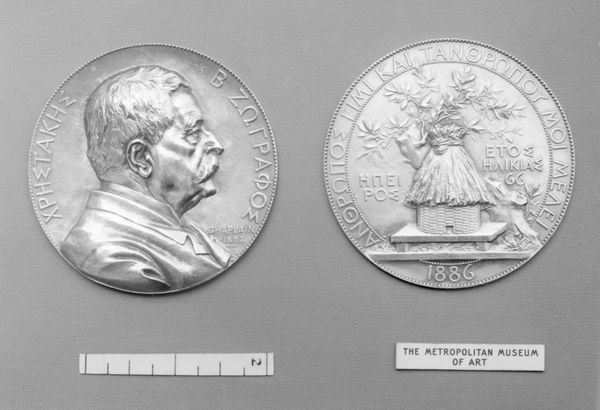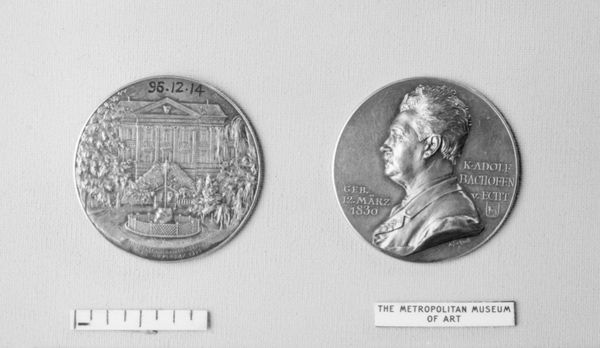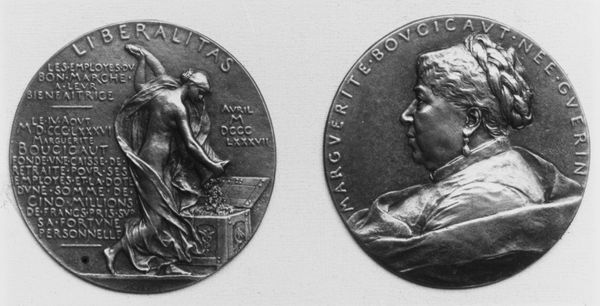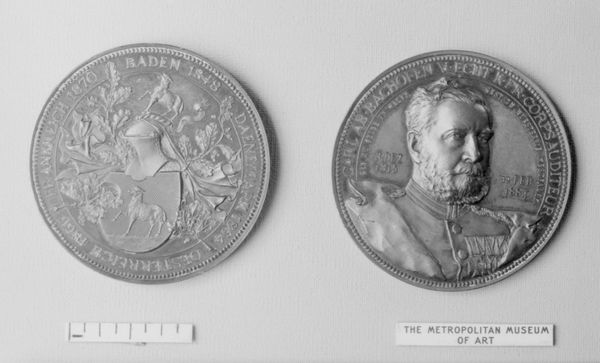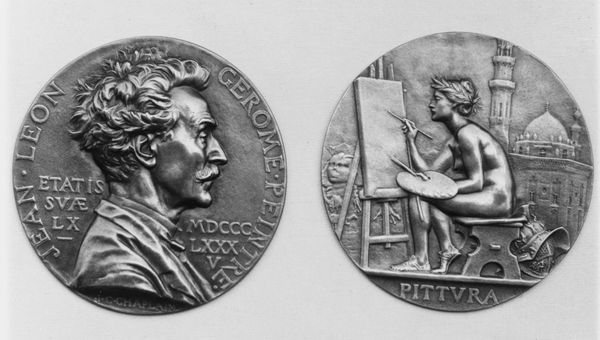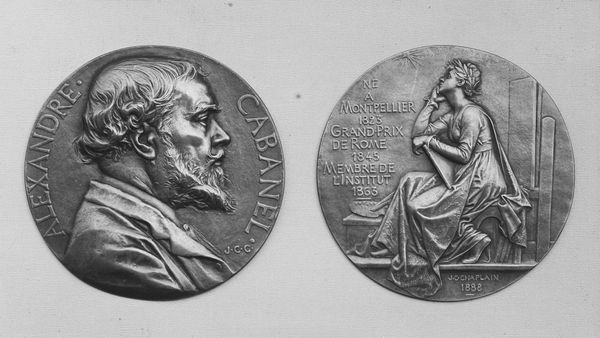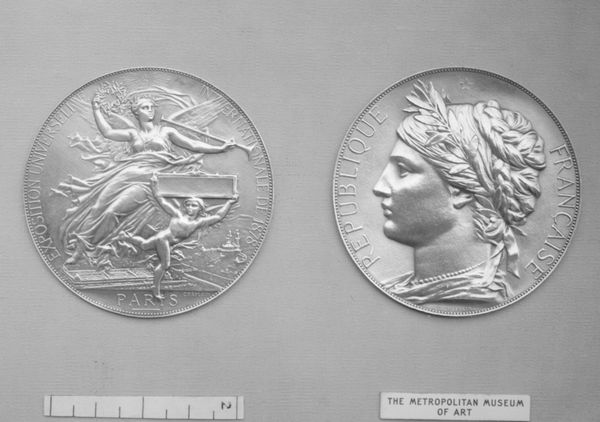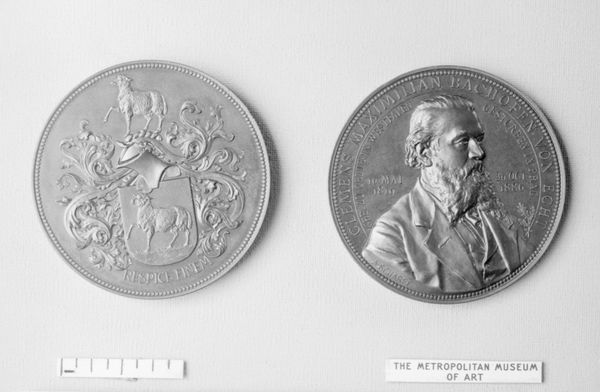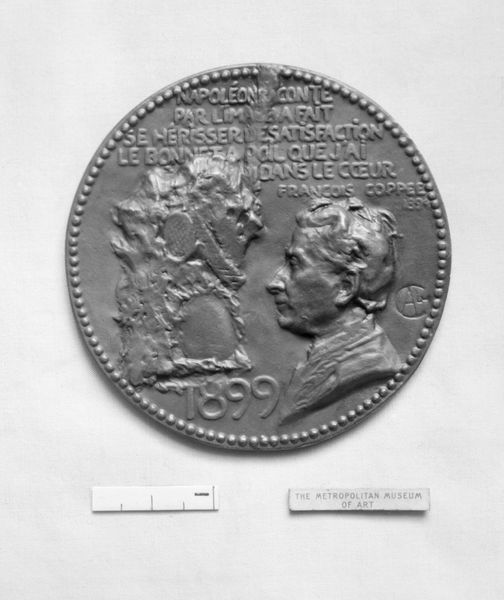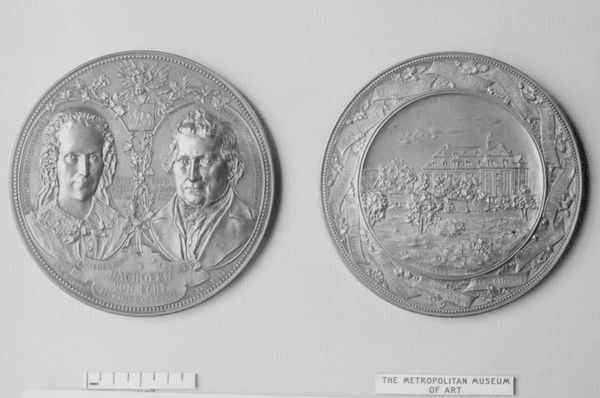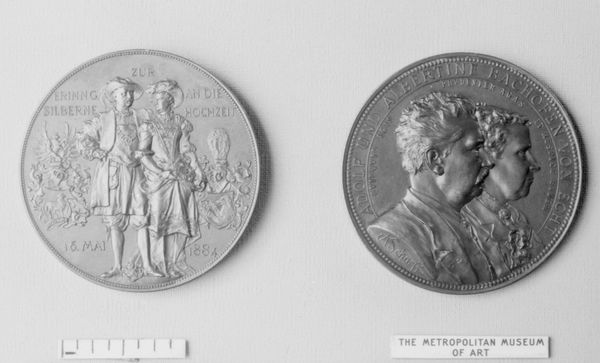
In Memory of Leon Gambetta, French Politician 1882
0:00
0:00
metal, relief, sculpture
#
portrait
#
neoclassicism
#
metal
#
sculpture
#
relief
#
sculpture
#
men
#
history-painting
#
decorative-art
#
profile
#
statue
Dimensions: Diameter: 2 11/16 in. (6.8 cm)
Copyright: Public Domain
Editor: This metal relief from 1882 by Jules-Clément Chaplain is titled *In Memory of Leon Gambetta, French Politician*. It’s at the Met. What strikes me is the dichotomy: one side shows a vibrant, almost heroic profile of Gambetta, while the other looks like a graveyard with broken trees. How should we interpret these contrasting images? Curator: I'm immediately drawn to the public role commemorative medals played. It’s not just about mourning a politician; it’s about constructing and circulating a specific image for the populace. Note the explicit dates surrounding his name, grounding the figure in factual reality and implicitly underscoring the brevity of life. Consider, too, who was commissioning and distributing these images? Was it the state, a political party, or a private citizen seeking to sway public sentiment? Editor: So, beyond being a memorial, it’s a political statement? The "QVO JVSSA POPVLI" – "by the order of the people” inscription also speaks to this public dimension, doesn't it? Curator: Precisely. It's vital to remember that commemorative art serves not merely to remember, but to actively shape historical narratives for present-day viewers. The broken tree and R.I.P. visually invoke mourning, while the politician's effigy becomes a public endorsement of past actions and policies, creating an appealing link between leader and constituency. Notice how the artist subtly elevated the features. It becomes a visual strategy. Editor: I didn't really consider it could also function as a political message... so it has propagandistic properties? It certainly broadens how one could view commemorative art. Curator: Exactly. It highlights the intertwined relationship between art, politics, and public memory in the late 19th century. Analyzing that entanglement offers invaluable perspectives on society, its values, and how it navigates grief and historical narrative through art. Editor: Well, it's fascinating to look at it beyond its initial appearance. Thank you.
Comments
No comments
Be the first to comment and join the conversation on the ultimate creative platform.
